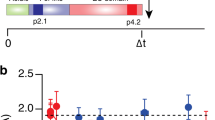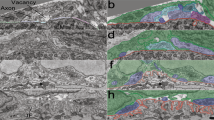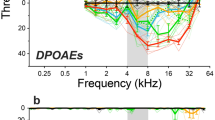Abstract
SYNAPTIC connections are capable of a remarkable proliferation after nervous tissue has been damaged and some synapses have been destroyed. This proliferation, or ‘sprouting’, of remaining, intact, synapses within partially denervated tissue has been found to occur in the peripheral, autonomic and central nervous systems1–5. As yet, however, the functional ability of these sprouted synaptic contacts has not been extensively tested and the persistence of the sprouted synapses over long periods has not been studied. We have been investigating these problems in the para-sympathetic cardiac ganglion in the frog. Earlier studies have shown that when the nerve supply to the ganglion is partially destroyed by crushing one vagus nerve, axons in the other vagus nerve sprout and synapse with the denervated neurones1. Here I describe experiments in which the persistence of the sprouted synapses in the cardiac ganglion was tested by allowing the damaged axons to regenerate into the tissue. The results indicate that regenerating vagal fibres are able to re-establish some, but not all, of their synaptic connections and that innervation from the sprouted nerve decreases.
This is a preview of subscription content, access via your institution
Access options
Subscribe to this journal
Receive 51 print issues and online access
$199.00 per year
only $3.90 per issue
Buy this article
- Purchase on Springer Link
- Instant access to full article PDF
Prices may be subject to local taxes which are calculated during checkout
Similar content being viewed by others
References
Courtney, K., and Roper, S., Nature, 259, 317–319 (1976).
Raisman, G., and Field, P. M., Brain Res., 50, 241–264 (1973).
Lynch, G. S., Matthews, D., Mosko, S., Parks, T., and Cotman, C. W., Brain Res., 42, 311–318 (1972).
Murray, J. G., and Thompson, J. W., J. Physiol., Lond., 135, 133–162 (1957).
Edds, M. V., Jr, Q. Rev. Biol., 28, 260–276 (1953).
McMahan, U. J., and Kuffler, S. W., Proc. R. Soc., B 177, 485–508 (1971).
Purves, D., Nature, 256, 589–590 (1975).
Guth, L., and Bernstein, J. J., Expl Neurol., 4, 59–69 (1961).
Cass, D. T., Sutton, T. J., and Mark, R. F., Nature, 243, 201–203 (1973).
Sotelo, C., and Palay, S. L., Lab. Invest., 25, 653–671 (1971).
Author information
Authors and Affiliations
Rights and permissions
About this article
Cite this article
ROPER, S. Sprouting and regeneration of synaptic terminals in the frog cardiac ganglion. Nature 261, 148–149 (1976). https://doi.org/10.1038/261148a0
Received:
Accepted:
Issue Date:
DOI: https://doi.org/10.1038/261148a0
This article is cited by
-
Ouabain enhances release of acetylcholine in the heart evoked by unilateral vagal stimulation
Naunyn-Schmiedeberg's Archives of Pharmacology (1986)
Comments
By submitting a comment you agree to abide by our Terms and Community Guidelines. If you find something abusive or that does not comply with our terms or guidelines please flag it as inappropriate.



